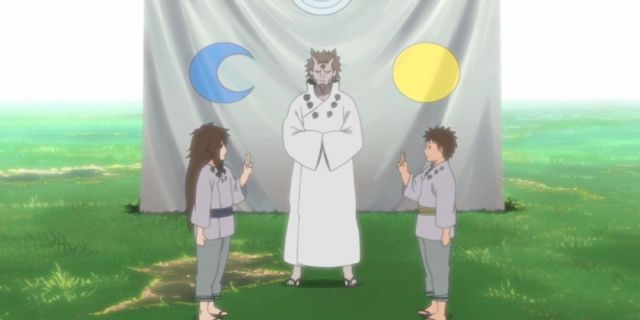Highlights
- The Uchiha clan’s origins and legacy of resentment have led to the production of numerous powerful villains in the series.
- The Sharingan’s power comes at a great cost, often leading Uchiha clan members down a dark path in their pursuit of strength.
- The Uchiha Massacre, fueled by long-standing tension and marginalization, solidified characters like Itachi and Sasuke on a path of villainy.
The Naruto series has a vast array of captivating villains with immense power who have duly played a significant role in the series. Many of these villainous characters hail from different villages that are a part of the great Shinobi world. In the Naruto universe, the Hidden Leaf Village−Konohagakure− has many powerful ninjas and clans with exceptional abilities. However, the Uchiha stand out, not just for their exceptional eye power, the Sharingan, but also for the great number of villains they have produced in the series. Despite eventual redemption for a few, the Uchiha’s track record of producing villains remains undeniable.
Origins of the Uchiha’s Resentment
A History Of Rivalry

The Uchiha clan traces its lineage back to Indra Otsutsuki, son of the progenitor of chakra, Hagoromo. Indra has a brother, Asura, and their father tasked them with a mission in a bid to choose a successor who would also be a harbinger of peace in the world. After both brothers completed their missions, Hagoromo chose Asura as his successor. Hagoromo’s choice caused a rift between the two brothers. Hagoromo chose Asura instead of Indra due to his sons’ contrasting beliefs. Indra believed that power was the key to peace, while his brothers believed in the philosophy of love and cooperation. In this vein, Indra, consumed by jealousy towards his younger brother, embarked on a path of destruction, his rage fueled by hatred. Indra’s legacy, including his deep-seated hatred, permeated the Uchiha clan for generations, manifesting in their actions. The Uchiha clan history is riddled with examples of members- Sasuke, Obito, Madara- who, driven by grief or the desire for vengeance and power, turned into villains.
Thereafter, Asura’s legacy and lineage also manifested in various individuals throughout history, and one of his reincarnations is Hashirama Senju. In this way, the rivalry continued long after Indra and Asura’s death. In this way, the Senju and the Uchiha clan have a bitter rivalry and deep-rooted resentment. Even after the two clans came together to establish the Hidden Leaf Village, this underlying tension and mistrust persisted. The Uchiha and Senju were locked in an endless cycle of retaliation and bloodshed. Madara Uchiha and Hashirama Senju, who were once friends, later became rivals due to the long-standing rivalry and resentment between the two clans.
The Power Of The Sharingan
The Iconic Eye Of The Uchiha

The Uchiha, with their powerful Sharingan, believed they were the superior clan. To unlock the basic Sharingan, a Uchiha must experience a life-threatening situation or the loss of a loved one. This process itself is deeply rooted in pain and can ultimately lead to the thirst for power. For example, Itachi Uchiha awakened his Sharingan at the age of eight following the death of his teammate, and he activated the Mangekyo after witnessing the death of Shisui. A traumatic experience awakens the Sharingan, but the Mangekyo Sharingan, a more advanced form, requires an even greater emotional trauma to unlock its power. The Mangekyo Sharingan often stemmed from the death of someone close to the user. This harsh requirement to obtain the Sharingan leads to a vicious cycle where Uchiha members are driven to extreme actions to gain its power. Most times, the psychological burden of these actions and the death of the person who aids the Sharingan activation further drives the user toward darker paths. The Naruto series vividly portrays many Uchihas who descend into a villainy path either due to the immense burden that comes with the power or festering arrogance within that makes them thirst for more power.
The Uchiha Massacre
The Great Power Tussle In The Hidden Village

The defining moment that truly cemented the fate of characters like Itachi and Sasuke into a villainy path was the Uchiha Massacre. The Uchiha clan’s marginalization within Konoha significantly contributes to their descent into villainy in the Hidden Village. Despite their critical role in the village’s founding, the Uchiha were increasingly isolated and mistrusted due to their immense power by the leaders of Konoha. The growing distrust between the village and the Uchiha clan led to their segregation, forcing them to relocate to the village outskirts. The isolation fostered resentment and a sense of betrayal among the Uchiha, leading to a plan to overthrow the current leadership of the village and the eventual coup attempt orchestrated by Fugaku Uchiha. Itachi carried out the massacre; he eliminated all members of the Uchiha clan but spared only his brother, Sasuke.
After Sasuke witnessed the death of his family at the hands of his older brother, it shattered him and ignited a thirst for vengeance. Due to this traumatic event, Sasuke had a lonely childhood and had trouble relating to his peers in the Ninja school. However, Sasuke’s deep desire for vengeance on his brother consumed him later in life, transforming him from a promising young ninja to a power-hungry villain. The thirst for power and vengeance led Sasuke to the nest of the villainous Orochimaru. Also, his brother’s status as a rogue ninja led him to join the Akatsuki, a dangerous organization that caused misery for many people. All these personal thirst for vengeance was a direct consequence of the Uchiha Massacre and the resentment and thirst for power hidden within the Uchiha clan. Also, beyond the tumultuous chain of events that led to the Uchiha Massacre, the clan’s history and inherent traits also predisposed them to produce villainous figures.
Naruto is available to stream on Crunchyroll.











Leave a Reply